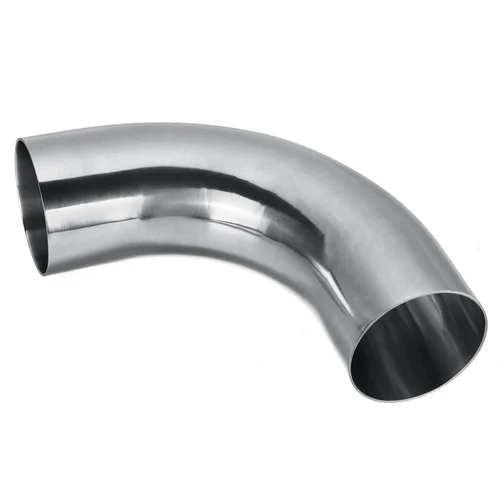-
Cangzhou Yulong Steel Co., Ltd.
-
Phone:
+86 13303177267 -
Email:
admin@ylsteelfittings.com
- English
- Arabic
- Italian
- Spanish
- Portuguese
- German
- kazakh
- Persian
- Greek
- French
- Russian
- Polish
- Thai
- Indonesian
- Vietnamese
- Zulu
- Korean
- Uzbek
- Hindi
- Serbian
- Malay
- Ukrainian
- Gujarati
- Haitian Creole
- hausa
- hawaiian
- Hebrew
- Miao
- Hungarian
- Icelandic
- igbo
- irish
- Japanese
- Javanese
- Kannada
- Khmer
- Rwandese
- Afrikaans
- Albanian
- Amharic
- Armenian
- Azerbaijani
- Basque
- Belarusian
- Bengali
- Bosnian
- Bulgarian
- Catalan
- Cebuano
- China
- China (Taiwan)
- Corsican
- Croatian
- Czech
- Danish
- Esperanto
- Estonian
- Finnish
- Frisian
- Galician
- Georgian
- Kurdish
- Kyrgyz
- Lao
- Latin
- Latvian
- Lithuanian
- Luxembourgish
- Macedonian
- Malgashi
- Malayalam
- Maltese
- Maori
- Marathi
- Mongolian
- Myanmar
- Nepali
- Norwegian
- Norwegian
- Occitan
- Pashto
- Dutch
- Punjabi
- Romanian
- Samoan
- Scottish Gaelic
- Sesotho
- Shona
- Sindhi
- Sinhala
- Slovak
- Slovenian
- Somali
- Sundanese
- Swahili
- Swedish
- Tagalog
- Tajik
- Tamil
- Tatar
- Telugu
- Turkish
- Turkmen
- Urdu
- Uighur
- Welsh
- Bantu
- Yiddish
- Yoruba

Dec . 06, 2024 13:18 Back to list
Overview of DIN Flange Standards and Specifications for Industrial Applications
Understanding DIN Flange Specifications
Flanges are essential components that provide a means to connect pipes, valves, and other equipment in various industries. Among the many standards established for flanges, the Deutsches Institut für Normung (DIN) specifications are among the most widely adopted across Europe and other regions. These specifications ensure that flanges meet specific performance and quality criteria, enabling seamless integration and safe operation in piping systems.
Overview of DIN Flanges
DIN flanges come in several different types, suitable for various applications. They primarily adhere to a few key standards, most notably DIN 2573, DIN 2576, and DIN 2527. Each standard addresses different pressures, materials, and sizes, providing a comprehensive framework for manufacturers and users alike. DIN flanges are often made from materials such as carbon steel, stainless steel, and alloy steel, ensuring compatibility with different fluids and environmental conditions.
Types of DIN Flanges
1. DIN 2573 This standard covers raised-face (RF) flanges, which are common in low-pressure applications. They are characterized by a raised area around the bolt holes that aids in sealing. DIN 2573 flanges are often utilized in piping systems where moderate pressures are expected.
2. DIN 2576 These flanges are defined as flat-face (FF) types and are suitable for higher pressure applications. Unlike raised-face flanges, DIN 2576 flanges have a flat sealing surface, making them ideal for systems that require a flush connection.
3. DIN 2527 This includes slip-on flanges that are designed to slip over the end of a pipe. They are easier to install and align, making them a popular choice in various industrial applications. However, adequate welding is essential to ensure the integrity of the connection.
Dimension and Tolerances
DIN flange specifications detail exact dimensions, ensuring that flanges fit correctly within the overall piping system. These dimensions typically encompass bolt hole spacing, flange thickness, and the diameter of the flange itself. The key to successful flange installation is compliance with these specifications, as any deviations can lead to leaks, equipment failure, or safety hazards.
din flange specifications

Standards and Markings
Every DIN flange is marked according to specific guidelines, which provide essential information such as the type of flange, material grade, as well as the pressure rating. It is essential for engineers and technicians to understand these markings to select the appropriate flange for their application. The markings help in identifying the flange’s capabilities, making it easier to assess compatibility with existing piping systems.
Design Considerations
When specifying DIN flanges, several factors must be considered
- Pressure and Temperature Ratings Different applications have varying requirements for maximum pressure and temperature. Selecting a flange that meets or exceeds these ratings is crucial for safe operation.
- Material Compatibility The choice of material affects not only the strength and durability of a flange but also its corrosion resistance. Engineers must consider the fluid being transported and the environmental conditions when selecting materials.
- Sealing Methods Flanges can utilize different sealing methods depending on the application. Gaskets, O-rings, or even welding may be employed to achieve a secure seal.
Conclusion
In summary, DIN flange specifications play a vital role in ensuring the reliability and safety of piping systems across various industries. Understanding the types of DIN flanges, their dimensions, tolerances, and appropriate applications assists engineers and technicians in making informed decisions. By adhering to these standards and carefully considering factors such as pressure ratings, material compatibility, and sealing methods, it is possible to create durable and effective connections that withstand the rigors of operational demands. Whether in chemical processing, oil and gas, or water treatment, the importance of properly specified DIN flanges cannot be understated. Proper selection and installation not only enhance the integrity of the piping system but also contribute to overall operational efficiency.
Latest news
-
ANSI 150P SS304 SO FLANGE
NewsFeb.14,2025
-
ASTM A333GR6 STEEL PIPE
NewsJan.20,2025
-
ANSI B16.5 WELDING NECK FLANGE
NewsJan.15,2026
-
ANSI B16.5 SLIP-ON FLANGE
NewsApr.19,2024
-
SABS 1123 FLANGE
NewsJan.15,2025
-
DIN86044 PLATE FLANGE
NewsApr.19,2024
-
DIN2527 BLIND FLANGE
NewsApr.12,2024
-
JIS B2311 Butt-Welding Fittings LR/SR 45°/90° /180°Seamless/Weld
NewsApr.23,2024











